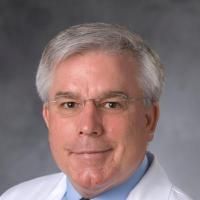Myeloablative transplantation using either cord blood or bone marrow leads to immune recovery, high long-term donor chimerism and excellent survival in chronic granulomatous disease.
Date
2012-09
Journal Title
Journal ISSN
Volume Title
Repository Usage Stats
views
downloads
Citation Stats
Attention Stats
Abstract
The curative potential of hematopoietic stem cell transplantation in patients with chronic granulomatous disease depends on availability of a suitable donor, successful donor engraftment, and maintenance of long-term donor chimerism. Twelve consecutive children (median age, 59.5 months; range, 8-140 months) with severe chronic granulomatous disease (serious bacterial/fungal infections pretransplantation; median, 3; range, 2-9) received myeloablative hematopoietic stem cell transplantation using sibling bone marrow ([SibBM]; n = 5), unrelated cord blood (UCB; n = 6), and sibling cord blood (n = 1) at our center between 1997 and 2010. SibBM and sibling cord blood were HLA matched at 6/6, whereas UCB were 5/6 (n = 5) or 6/6 (n = 1). Recipients of SibBM were conditioned with busulfan and cyclophosphamide ± anti-thymocyte globulin (ATG), whereas 6 of 7 cord blood recipients received fludarabine/busulfan/cyclophosphamide/ATG. Seven patients received granulocyte-colony stimulating factor-mobilized granulocyte transfusions from directed donors. The first 2 UCB recipients had primary graft failure but successfully underwent retransplantation with UCB. Highest acute graft-versus-host disease was grade III (n = 1). Extensive chronic graft-vs-host disease developed in 3 patients. All patients are alive with median follow-up of 70.5 months (range, 12-167 months) with high donor chimerism (>98%, n = 10; 94%, n = 1; and 92%, n = 1). Myeloablative hematopoietic stem cell transplantation led to correction of neutrophil dysfunction, durable donor chimerism, excellent survival, good quality of life, and low incidence of graft-vs-host disease regardless of graft source.
Type
Department
Description
Provenance
Subjects
Citation
Permalink
Published Version (Please cite this version)
Publication Info
Tewari, Priti, Paul L Martin, Adam Mendizabal, Suhag H Parikh, Kristin M Page, Timothy A Driscoll, Harry L Malech, Joanne Kurtzberg, et al. (2012). Myeloablative transplantation using either cord blood or bone marrow leads to immune recovery, high long-term donor chimerism and excellent survival in chronic granulomatous disease. Biology of blood and marrow transplantation : journal of the American Society for Blood and Marrow Transplantation, 18(9). pp. 1368–1377. 10.1016/j.bbmt.2012.02.002 Retrieved from https://hdl.handle.net/10161/24692.
This is constructed from limited available data and may be imprecise. To cite this article, please review & use the official citation provided by the journal.
Collections
Scholars@Duke

Timothy Alan Driscoll
Dr. Driscoll participates in multi-institutional studies for the treatment of high risk neuroblastoma patients using high dose chemotherapy with stem cell transplant and the development of new therapies for high risk neuroblastoma patients.

Vinod K. Prasad
1. Expanding the role of umbilical cord blood transplants for inherited metabolic disorders.
2. Impact of histocompatibility and other determinants of alloreactivity on clinical outcomes of unrelated cord blood transplants.
3. Studies to analyse the impact of Killer Immunoglobulin receptors on the outcomes of hematopoietic stem cell transplantation utilizing haploidentical, CD34 selected, familial grafts.
4. Propective longitudinal study of serial monitoring of adenovirus in allogenic transpants(SMAART)patients.
5. Use of mesenchymal stem cells for the treatment of GVHD
Unless otherwise indicated, scholarly articles published by Duke faculty members are made available here with a CC-BY-NC (Creative Commons Attribution Non-Commercial) license, as enabled by the Duke Open Access Policy. If you wish to use the materials in ways not already permitted under CC-BY-NC, please consult the copyright owner. Other materials are made available here through the author’s grant of a non-exclusive license to make their work openly accessible.
